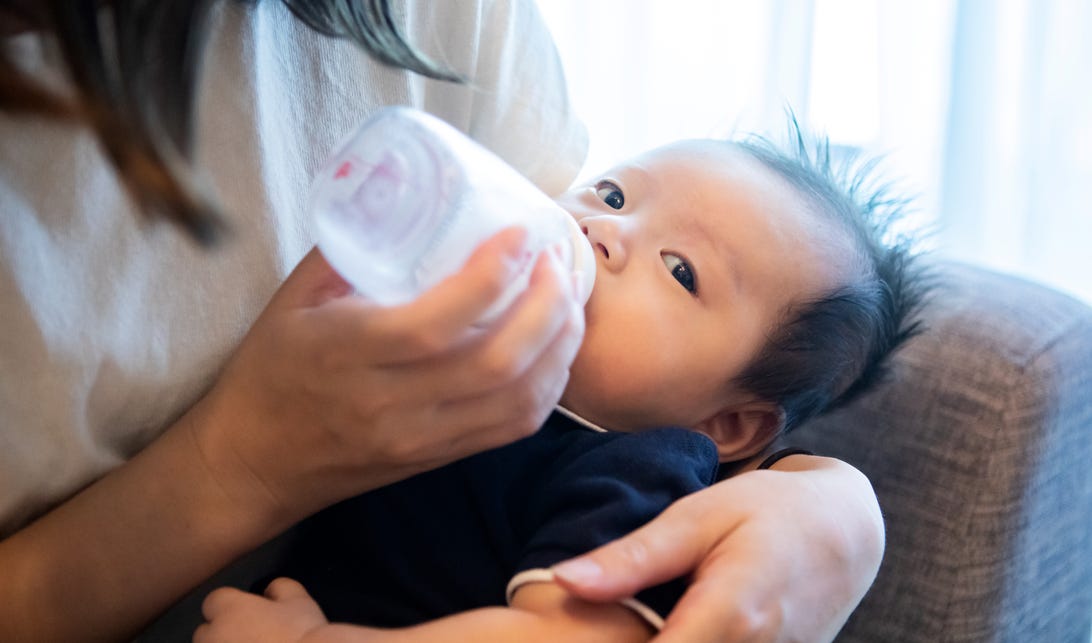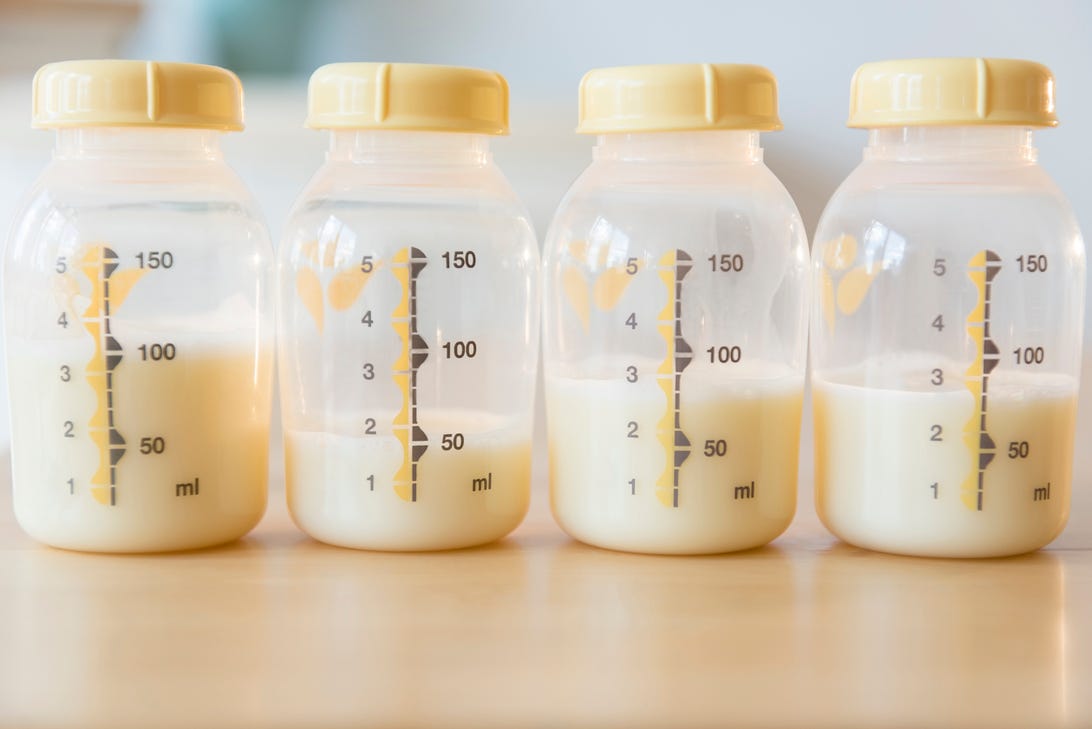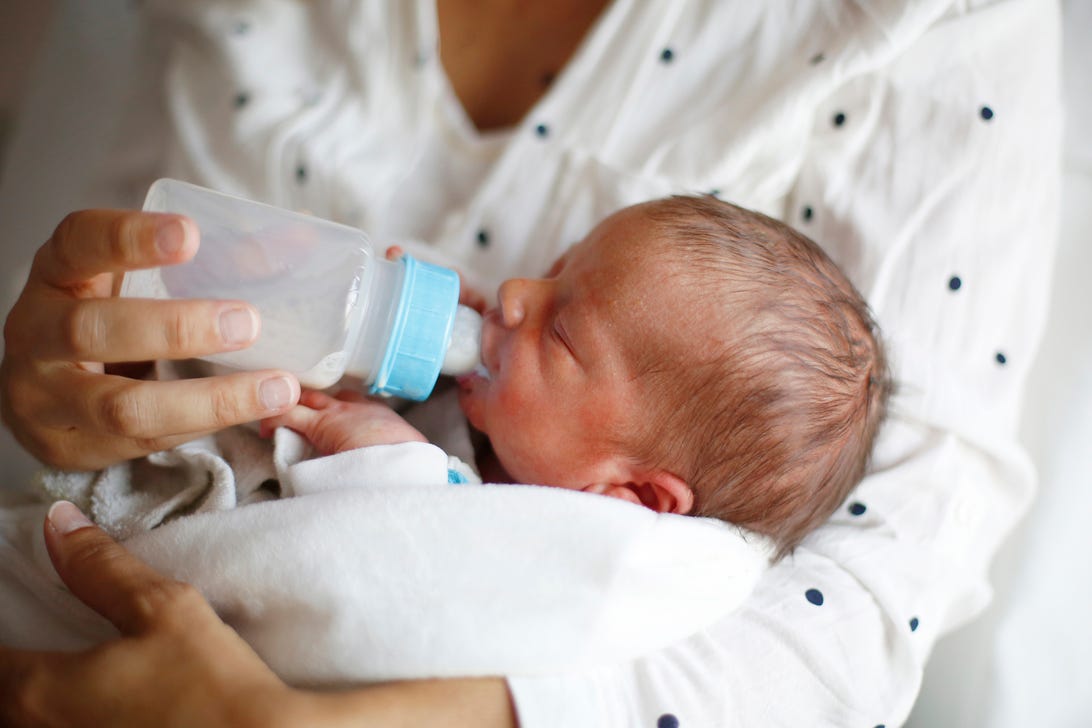
Parenthood can be exciting and overwhelming, especially when it's your first child. It's a time filled with questions and frantic Google searches about what's best for your baby. Don't worry -- that's completely normal.
Making sure your baby is eating is one of the most important tasks you have. So you may be wondering how many bottles you need to buy and keep on hand. The exact number depends on several factors, including your baby's age and whether you are breastfeeding. Here's what to consider when shopping for bottles and what types of bottles are available.

How many bottles do I need for a single day?
Every baby is different. How many bottles you need each day will depend on factors like your baby's age and whether you are breast-feeding, using formula or a combination of the two. There is no specific recommended number of bottles you need to buy to achieve peak feeding. But you should consider how often your baby eats and especially how often you want to clean the bottles.
You can expect to feed your newborn baby every two to three hours. They may need to eat more frequently if you are breastfeeding because breast milk is digested faster than formula.
We've rounded up the standard recommendations for how many baby bottles you need based on your baby's age and feeding habits.
Read more: Baby Registry Checklist: 10 Baby Products I Wish I'd Asked For
One to four baby bottles
If you are home and breastfeeding your baby, you won't need as many bottles. You'll likely only need to have one to four bottles ready to use per day. Of course, you'll want to have a few bottles on hand if you need to step out to run an errand. You can also consider having a few bottles around if you prefer to bottle feed your baby in public or if your partner wants to take part in feedings.
Bottles become less important as your baby gets older. You'll need fewer bottles if your baby is past the six-month mark and beginning to supplement with solid foods. In this case, experts recommend feeding them formula or breastmilk from a cup instead of a bottle.
Three to six baby bottles
It's common for babies to feed five to six times per day in the two-month to five-month age range. If you are doing a combination of breastfeeding and bottle feeding, your will likely need fewer than six bottles a day. Consider how often you need to clean the bottles. If you don't want to worry about cleaning the bottles every time your baby needs to eat, you can buy a few more.
Six or more baby bottles
Within the first month, newborns need six to eight feedings per day of around two to four ounces of milk. As your baby grows into their second month, how often you are feeding them may decrease because they are eating more at one time.
If you are also breastfeeding your baby, they will likely need fewer than six to eight bottles per day during that first month. However, if you're a working mom or will be away from your baby for periods of time, it's best to have more bottles on hand. You want to have enough to cover the entire time you're away.

How to find your ideal baby bottle
Now you have an idea of how many bottles you need, so let's talk about which bottles are best for your situation. There are a few factors to consider when choosing bottles for your little one. It comes down to the types of baby bottles and the materials used to manufacture them.
Types of bottles
There are several bottle types to consider. Each comes with pros, cons and specializations. Some parents choose to keep a variety on hand to fit different needs.
Standard bottles
Standard baby bottles are basically what comes to mind when you picture a baby bottle. They are the most common bottles you see at stores and are typically what parents use for everyday needs. With a standard baby bottle, you don't get any bells and whistles. They are dependable and offer the most standard fits for teats and accessories. Standard baby bottles are generally the most affordable option.
Anti-colic bottles
Sometimes, babies swallow air when using standard bottles, leading to painful gas and indigestion. This can cause your baby to have prolonged fits of crying, also known as colic. Colic is most common during the first six weeks and will usually go away on its own. Anti-colic bottles are designed to help prevent your baby from swallowing air while they eat. This type of bottle is typically more expensive than standard bottles and is more difficult to clean. However, if you've noticed your baby tends to swallow air, it's worth it.
Self-sterilizing bottles
Self-sterilizing bottles are designed to be quickly and easily sterilized in the microwave. You'll fill a small portion of the bottle's base with water and place the bottle's parts on top. Then, you place it in the microwave for a few minutes to steam sterilize.
Disposable bottles
These single-use bottles come ready to use and are relatively inexpensive. But using them frequently can quickly become more expensive than feeding your baby with reusable bottles. They also aren't eco-friendly.

Baby bottle materials
There are a few different materials commonly used in the production of baby bottles. Plastic, glass, silicone, and stainless steel are most common within the US. Each material comes with its benefits, downsides and price points. While some materials may be better for some circumstances, the final selection may be a matter of preference.
Plastic bottles
Plastic bottles have traditionally been the most common, though there are some issues to consider. In the past, plastic baby bottles had the industrial chemical Bisphenol A (BPA) in them. In 2012, the US Food and Drug Administration banned the plasticizer BPA from baby bottles due to health concerns. However, some chemicals that are still allowed in plastic bottles may make you uncomfortable about using them. Despite potential health concerns, plastic does offer an inexpensive and durable option. If you decide to go with plastic bottles, avoid ones with BPA, BPS, Phthalates and PVC.
Glass bottles
Glass bottles don't have the risk of chemicals that plastic bottles do. They are also easy to sanitize and can withstand high temperatures. The downside of glass bottles is that they are more expensive and can break. They may also be too heavy for your baby, who may try to grab the bottle while eating.
Silicone bottles
Food-grade silicone bottles are a favorite among parents since they are shatter-proof like plastic but don't run the same risk of harmful chemicals. If you've decided that you want silicone bottles for your baby, ensure the product is made with food- or medical-grade silicone. Note that silicone bottles are generally more expensive than plastic and glass bottles.
Stainless steel bottles
Stainless steel bottles are often more expensive, but they come with upsides others don't have. For instance, stainless steel bottles withstand high temperatures, are lightweight and easy to hold and won't shatter. The main downside of stainless steel bottles is the cost and there is the risk of them containing lead. To ensure that your baby bottle is lead-free, purchase #304 or 18/8 food-grade stainless steel.
Read more: Should You Sterilize Your Baby Bottles? Here's When and How to Do So
Other considerations
There are other decisions that go into buying baby bottles. There are various accessories and components: nipples, venting systems, breast pump attachments and so on. You need to make sure they all can work together. Unfortunately, products aren't universally compatible, so do your research before you shop.
Different bottles also have various widths of the neck, which can impact how easy it is to clean and will determine which nipples will fit. Beyond that, it's best to ensure you choose bottle types and materials that are you are comfortable with.
The information contained in this article is for educational and informational purposes only and is not intended as health or medical advice. Always consult a physician or other qualified health provider regarding any questions you may have about a medical condition or health objectives.









 Add Category
Add Category